
Back to Blogs
Discover
10 Things About Bury St Edmunds
Discover some lesser known facts about Bury St Edmunds that you may find surprising...
1. A Bury St Edmunds Lawyer founded Jamestown

Jamestown in Virginia, USA, was founded by Bury St Edmunds explorer and lawyer Bartholomew Gosnold, the first permanent English settlement in America. His legacy led him to become one of the world's most renowned travellers.
Visitors to Bury St Edmunds can see a permanent reminder of Gosnold’s adventures in the Refectory garden of St Edmundsbury Cathedral. A beautifully modern piece of art which depicts Gosnold’s ship, the Godspeed, by artist Jonathan Clarke.
2. The single largest Witch Trial was held in Bury St Edmunds

When the Great Witch Craze between 1599 and 1694 swept through Europe and the European colonies in America the history of Bury St Edmunds took a very dark turn and the largest single witch trial in England was held in Bury St Edmunds. Find out more about witchcraft at Moyse's Hall Museum.
3. The Town has a Starring Role in a Dickens Novel
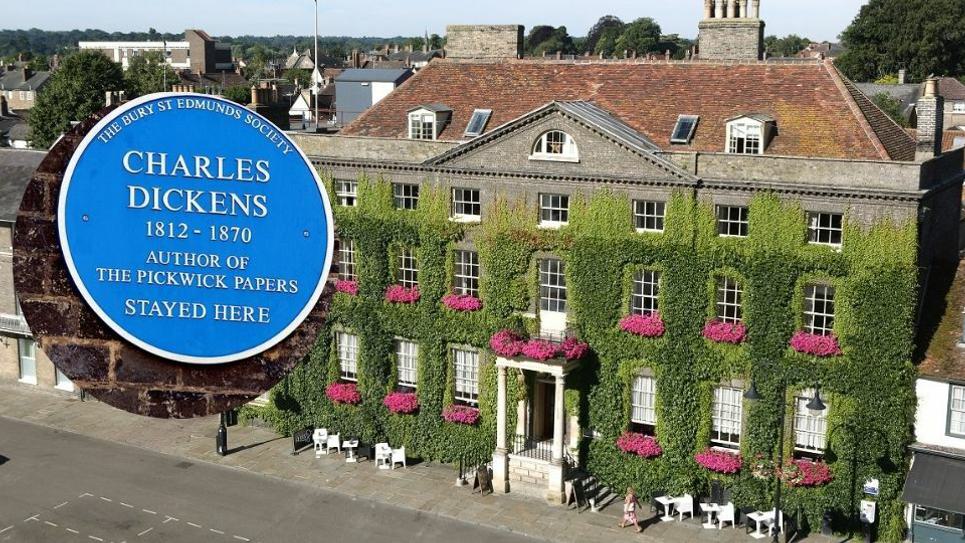
Bury St Edmunds and town's former coaching inn now hotel The Angel feature extensively in Charles Dickens' The Pickwick Papers. Dickens stayed at The Angel three times, first as a journalist in 1835, and then returned as a famous author in 1859 and 1861 to read to a captive audience at the next door Athenaeum.
His favourite room, 215, is now known as the Charles Dickens room, and still contains the original four-poster bed he slept in!
4. A French Queen is buried in the town
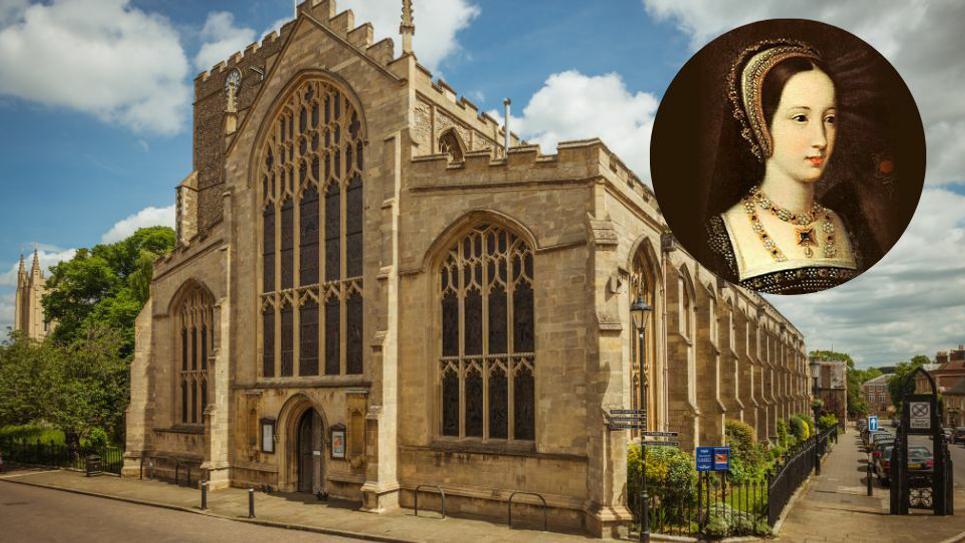
St Mary’s Church in Bury St Edmunds is the final resting place of Mary Tudor, Queen of France, Duchess of Suffolk and favourite sister of Henry VIII (after whom the Mary Rose was named).
5. Peter Pan's Roots Can Be Found in Nearby West Stow

In the mid-1890s, Peter Pan author J. M. Barrie is said to have visited the West Stow school house, just yards away from the West Stow Pods glamping site.
Local people say he was visiting a headmistress he was acquainted with at the school and came upon the twisted roots of a Scots pine while walking through the woods. The tree’s magic is said to have inspired an illustration in the first edition of Peter Pan!
6. A Road Sign on the Town's Angel Hill is thought to be a First

The 'Pillar of Salt' sign on Angel Hill in Bury St Edmunds was put up in 1935 and is thought to be the first internally illuminated road sign in the country.
7. Hidden within the town's Atheneaum is a Victorian Astronomical Observatory

Tucked away within the green dome on top of The Athenaeum is one of only two astronomical observatories in Suffolk complete with a Victorian Troughton & Simms 4-inch refracting telescope.
The observatory was built after an inspiring astronomy lecture at The Athenauem by Sir James Airy, 7th Astronomer Royal, in October 1858, at the same time the impressive Donati’s comet was looming large in the night sky.
Unfortunately the observatory is not currently open to the public as it is in need of restoration but The Athenaeum Astronomy Association has started fundraising to restore the observatory to its former glory.
8. The town is thought to have the earliest example of a sundial

This Victorian drinking fountain, with sundial cube on the top, now a planter in the Abbey Gardens was gifted to the people of Bury St Edmunds in 1871 by the 3rd Marquess of Bristol and was originally outside The Nutshell pub in the Traverse.
The sundial is an extremely early example - quite possibly the earliest in the country - of a sundial that allowed the town clocks to be set to GMT rather than the local mean time.
9. Bury St Edmunds has its own rose.

The Saint Edmund Rose was created in commemoration of the completion of St Edmundsbury Cathedral's Millennium Tower and planted in the Abbey Gardens Rose Garden by HRH Charles, Prince of Wales and Camilla, Duchess of Cornwall in 2005.
10. The Abbey of St Edmund would have towered over Bury St Edmunds had it not been destroyed
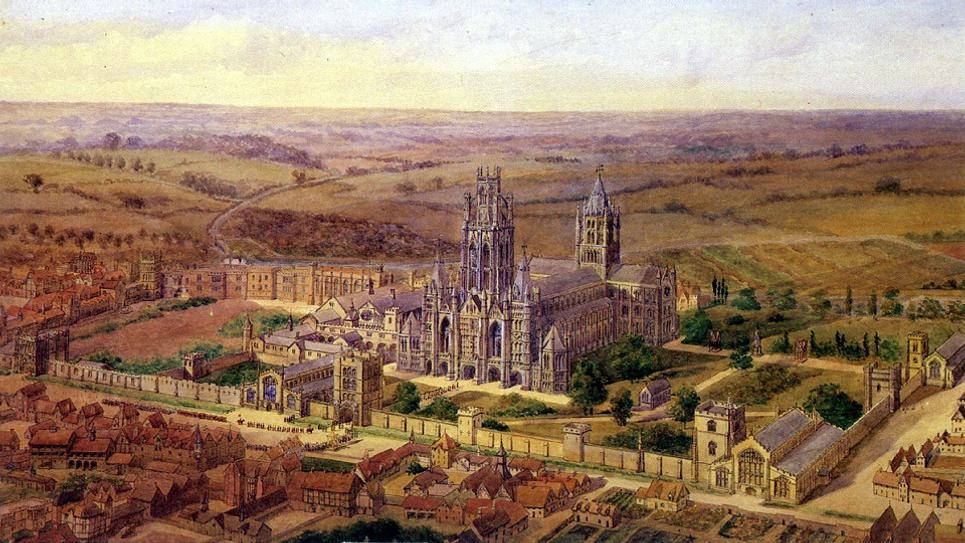
The magnificent St Edmundsbury Cathedral's Millennium Tower is 160ft tall and you can discover magnificent views over the town from the top.
But did you know that had it not been destroyed the Abbey of St Edmund would have stood at least twice as tall! You can see the remains of the abbey in the Abbey Gardens today.
Latest news
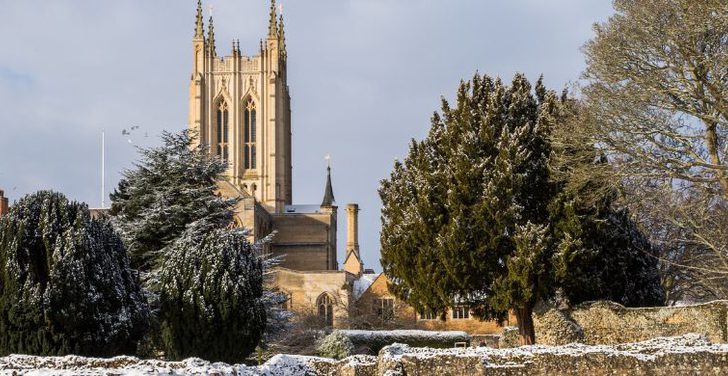
News
Savour The Winter Season in Bury St Edmunds
Ways to mark the winter season in Bury St Edmunds

News
Where to see fireworks in and around Bury St Edmunds
If you're visiting Bury St Edmunds around bonfire night here’s our roundup of some of the best celebrations in Bury St Edmunds and the surrounding towns and villages.

News
Town’s Museum Forms New Partnership with US Museum
Moyse’s Hall Museum will be forging links with a museum in Salem Massachusetts as part of a project to explore the shared history of the infamous witch trials.

News
Bury St Edmunds Comedy Festival 2026 Line-Up
The 2026 line-up includes Jason Manford, Luke Wright, Pauline Eyre and Daliso Chaponda!

News
Enjoy two months of rib-tickling fun at Comedy Festival
Bury St Edmunds third Comedy Festival will bring two months of rib-tickling, laugh out loud fun to Suffolk during funny February and March 2026.
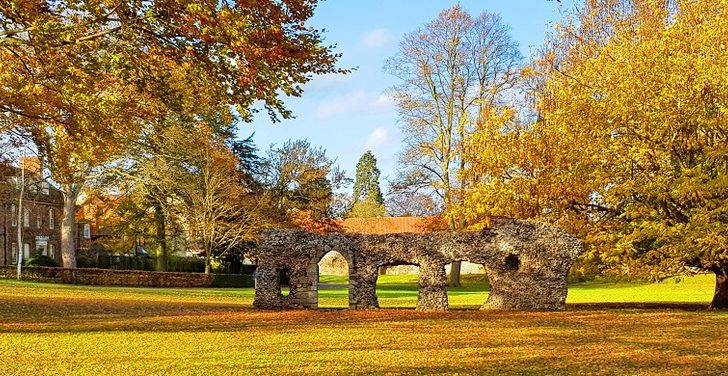
News
Autumn in Bury St Edmunds
From pumpkins to falling leaves and from ghost stories to trails, this is the only guide you'll need this autumn in Bury St Edmunds!

News
Tea with a View
Whether it's the hustle bustle of people watching, a breath-taking vista or the wonder of a historic setting, there are plenty of captivating places for tea with a view in Bury St Edmunds and beyond.

News
St Edmundsbury Cathedral Launches 2026 Dogs in the Cathedral Calendar
St Edmundsbury Cathedral in Bury St Edmunds is celebrating being a dog-friendly Cathedral once again with the launch of the 2026 Dogs in the Cathedral Calendar.

News
Where to Go Pumpkin Picking in Bury St Edmunds This Autumn
Autumn fun, fresh air, and fields full of pumpkins in and around Bury St Edmunds — what more could you need?
